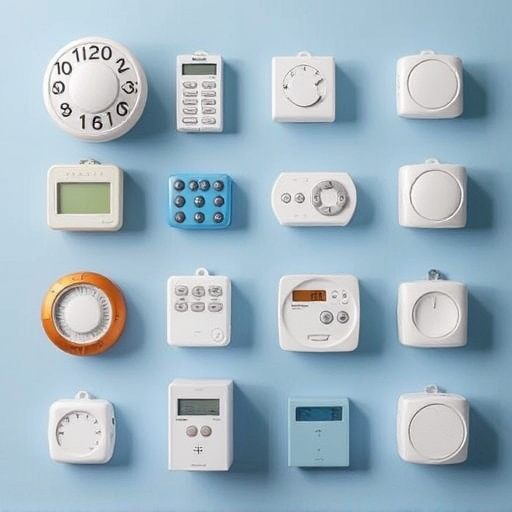In an era where aging populations strive for independence, wearable security alarms with robust Personal Safety Siren Battery Life revolutionize senior safety. These devices enable swift emergency response through personal safety sirens and durable batteries, fostering peace of mind for seniors living alone. Key features include water resistance, compact design, and customizable alerts, ensuring reliable protection tailored to individual needs. Long-lasting batteries are crucial for consistent safety, especially in remote areas, challenging traditional barriers to adoption for older adults with limited mobility.
As our population ages, ensuring senior safety becomes paramount. Wearable security alarms offer a discrete yet powerful solution, providing peace of mind for both seniors and their loved ones. This article delves into the growing need for these devices, highlighting key features to look for, such as ease of use and durable design. We also explore critical aspects like personal safety siren functionality and battery life, crucial elements in ensuring timely assistance. By understanding both the benefits and potential challenges, caregivers can make informed decisions to enhance elderly safety.
- Understanding the Need for Wearable Security Alarms for Seniors
- Key Features to Consider in Personal Safety Siren Devices
- Exploring Battery Life and Its Impact on Senior Safety
- Benefits and Potential Challenges of Wearable Alarms for Elderly Individuals
Understanding the Need for Wearable Security Alarms for Seniors
In today’s world, ensuring the personal safety of seniors is a paramount concern for families and caregivers. With an increasing aging population, many elderly individuals live alone, making it crucial to have effective solutions for monitoring their well-being and responding to emergencies swiftly. Wearable security alarms address this need by offering a discrete yet powerful tool that can enhance the independence and peace of mind of seniors.
These devices, often equipped with personal safety sirens and long-lasting battery life, allow seniors to signal for help in various situations. Whether they experience a fall, encounter a medical emergency, or simply need assistance, a wearable alarm can discreetly notify emergency services or caregivers, ensuring prompt response times. This technology is a game-changer in promoting senior independence while providing much-needed reassurance for loved ones.
Key Features to Consider in Personal Safety Siren Devices
When choosing a personal safety siren device, several key features stand out as essential for seniors’ peace of mind. One of the most critical aspects is battery life. Seniors often rely on these devices as their primary emergency response system, so a long-lasting battery is non-negotiable. Devices with extended battery life ensure continuous protection without frequent replacements or recharges, which can be challenging for some users.
Additionally, consider features like water resistance and ease of carry. A water-resistant design protects against accidental exposure to moisture, while a compact and lightweight build enables seniors to carry the device conveniently. Some models even offer customizable alerts and distress signals, allowing users to adapt the siren’s functionality to their specific needs and preferences.
Exploring Battery Life and Its Impact on Senior Safety
The longevity of a wearable security alarm’s battery life is a critical factor in ensuring senior safety, as it directly impacts the device’s reliability and the peace of mind it provides. In an industry where personal safety sirens are essential tools for elderly individuals living alone, a device that runs out of power at the wrong moment could have severe consequences. Seniors rely on these alarms to signal help during emergencies, whether it’s a fall or an unexpected medical situation. Therefore, manufacturers must prioritize creating wearables with efficient and durable batteries to guarantee consistent protection.
Battery life should be designed to accommodate the unique needs of seniors, who may not always have ready access to power sources. A long-lasting battery ensures that the alarm remains operational throughout the day and into the night without frequent charging or replacement, which can be challenging for older adults with limited mobility. This aspect of wearable security alarms is a game-changer in enhancing personal safety, especially in remote or rural areas where emergency services might take longer to reach.
Benefits and Potential Challenges of Wearable Alarms for Elderly Individuals
Wearable security alarms offer a unique solution for personal safety, especially for elderly individuals who may live alone or have mobility concerns. These devices provide a sense of security and peace of mind by allowing seniors to quickly alert emergency services in case of an accident, fall, or other distressing situation. A personal safety siren, often incorporated into these wearables, can attract attention and deter potential intruders, giving users added protection.
While the benefits are clear, there are potential challenges to consider. Battery life is a significant factor; devices must have sufficient power to last through the day, as seniors might not always be near a power source. Additionally, ensuring ease of use for individuals with varying levels of technological familiarity and physical ability is crucial. Comfortable designs that accommodate different body types and sizes are essential to encourage adoption and regular use.
Wearable security alarms, particularly those with advanced personal safety siren features and robust battery life, offer seniors an added layer of independence and peace of mind. By considering key aspects like battery longevity, these devices can ensure continuous protection, enabling elderly individuals to live safely and comfortably in their homes. When choosing a wearable alarm, understanding the benefits and potential challenges is essential to select a device that best fits individual needs.
